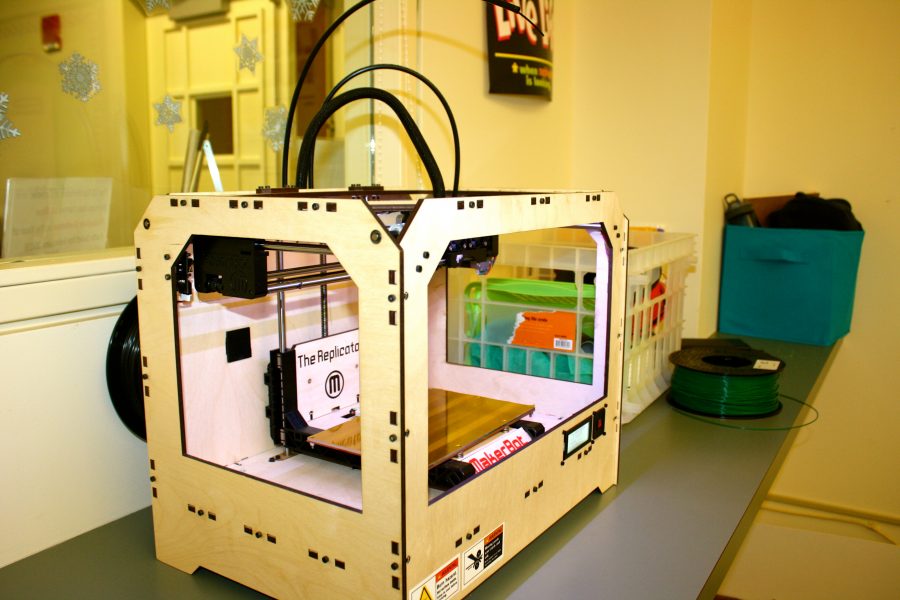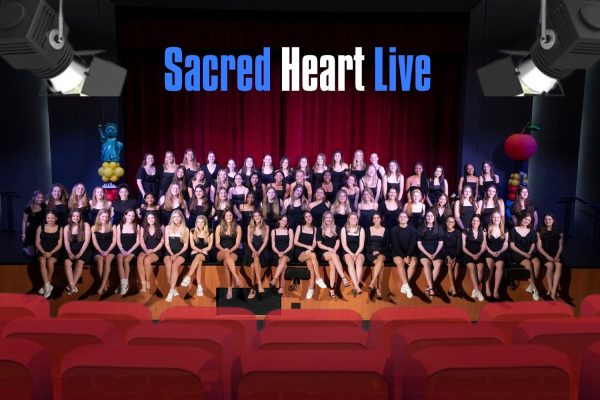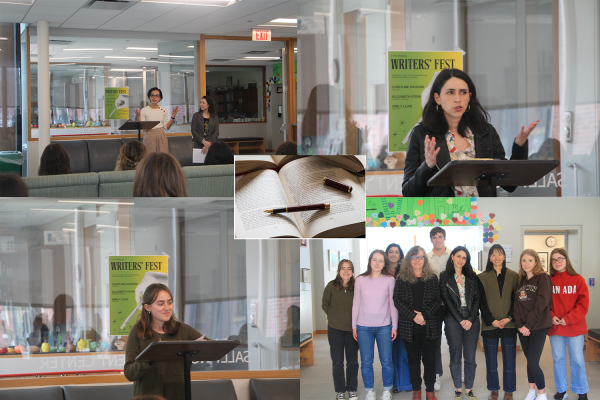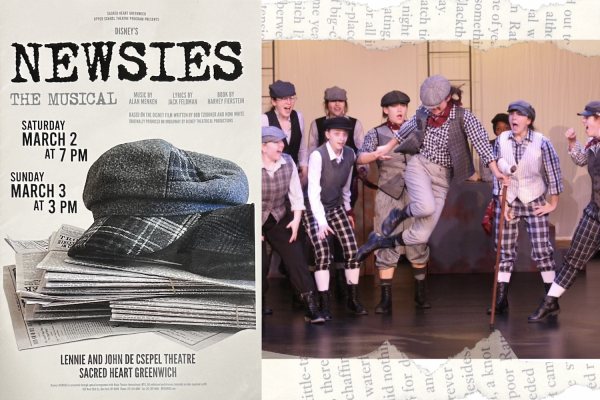Life in 3D

The Middle School Computer Lab at Convent of the Sacred Heart now houses the potential for eager designers hoping to revolutionize the manufacturing process and open the door for innovation and entrepreneurship. The Replicator – a 3D printer.
A 3D printer is not a normal printer. Historically, manufacturing creates an object out of materials that already exist, leaving extraordinary amounts of waste. A 3D printer makes a design out of completely new materials by depositing layers of plastic, or other substances, to form virtually anything.
3D printers are now becoming more accessible. Not only are they produced for factory purposes, but there are also smaller printers for homes, schools, and offices as well.
Mrs. Carozza, Middle School Coordinator of Educational Technology, understands the value of having a 3D printer in a school environment. She believes that it gives students the chance to create designs that can improve their world in some way.
“The middle school has been using the 3D printer for projects in math and arts classes. Seventh grade students have been designing custom jewelry,” Mrs. Carozza said. “My hopes in terms of next steps for the middle school include using the printer to create useful objects that can be incorporated into projects or everyday life.”
The 3D printer has the potential to create an environment in which businesses can concentrate on a consumer’s wants rather than saving money. This type of printing also provides the ability to create prototypes at a lower cost, allowing for more creativity.
“I think the biggest benefit of 3D printing is having the ability to quickly make models and prototypes,” Upper School math teacher Mr. Padilla said. “Anybody can take an idea and turn it into a physical object in a matter of hours using 3D modeling software and a 3D printer. Having a 3D printer in the school can spur creativity and I hope it does. It’s an incredible asset to have in the school.”
Mr. Padilla took advantage of having a 3D printer at school and created a replacement part to fix a gear on a piece of equipment that the physics department uses.
From a student’s point of view, the accessibility of 3D printing in the school is equally beneficial.
“I think that with the 3D printer, businesses would thrive,” sophomore Emily Davenport said. “It could significantly improve production efficiency, and could also be used to further modernize education. With the 3D printer, class-room demonstrations could be easier, more detailed, more accurate, and a lot more interesting.”











